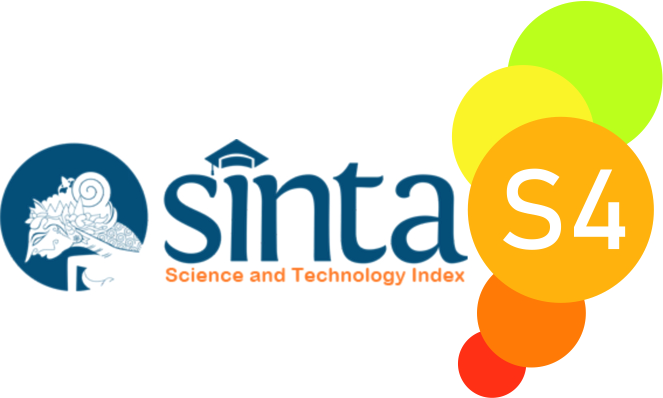The Relationship Between Learning Facilities And Learning Interest In Fashion Design Mode Program At Community Reading Center
 ), Vevi Sunarti(2),
), Vevi Sunarti(2), (1) Universitas Negeri Padang
(2) Universitas Negeri Padang
 Corresponding Author
Corresponding Author
DOI : https://doi.org/10.24036/spektrumpls.v10i1.114787
Full Text:
 Language : en
Language : en
Abstract
Non-formal education is intended for people who specifically need education as a complement, addition to, and substitute for formal education. Non-formal education can be used as a support, a complement, an addition to the education obtained by a person in formal education, where non-formal education is held for people who need this education. Non-formal education includes equality education, training and work skills, functional literacy, women's empowerment, youth, PAUD, life skills, and others.Community Reading Park (TBM) is one of the institutions in the field of non-formal education. Community reading parks can be interpreted as non-formal educational institutions that focus on providing knowledge services in the form of print media (books) or electronic media (internet). On the other hand, the community reading park also functions as a supporter of non-formal education activities, one of which is literacy education.Fashion design is a non-formal education program that focuses on the science of designing and sewing clothes. This program is implemented in various non-formal educational institutions, one of which is the Community Reading Center (TBM). There is an important component in the fashion design program, namely facilities for learning. Learning facilities are said to be an important component because they are able to encourage a person's interest in participating in a learning program. Interest in learning is an element in supporting the success of the learning program. Without high interest from program participants, it will create failure in a program. Facilities have a relationship with interest in learning in achieving a successful program.
Keywords: TBM and non-formal educationReferences
Asvio, N. (2015). Hubungan Lingkungan Belajar dan Motivasi Belajar dengan Minat Belajar Mahasiswa Semester III Program Studi Diploma III Kebidanan Stikes Prima Nusantara Bukittinggi. Jurnal Al-Fikrah, III(1), 95–108.
Dalyono. (2014). Psikologi Pendidikan. Jakarta: Rineka Cipta.
Darmawan, R., & Pamungkas, A. H. (2021). Relationship Between SEM Training (Smart Entrepreneur Model) with Attitude PMW Participant Students in Running Business. SPEKTRUM: Jurnal Pendidikan Luar Sekolah (PLS), 9(2), 266. https://doi.org/10.24036/spektrumpls.v9i2.112745
Djaali. (2014). Psikologi Pendidikan. Jakarta: Bumi Aksara.
Djamarah, S. B. (2015). Psikologi Belajar. Jakarta: Rineka Cipta.
Hamalik, O. (2016). Psikologi Belajar dan Mengajar. Bandung: Sinar Baru Algesindo.
Irmawita, I. (2014). Penataan Taman Baca Masyarakat (TBM) sebagai Sarana Pembelajaran Warga Belajar Pendidikan Nonformal. PEDAGOGI : Jurnal Ilmiah Ilmu Pendidikan, XIV(2), 72–81.
Maulidiyah, A., & Roesminingsih, E. (2020). Layanan dan Fasilitas Perpustakaan dalam Meningkatkan Minat Baca Peserta Didik. Jurnal Inspirasi Manajemen Pendidikan, 8(4), 389–400.
Mulyasa, M. (2014). Manajemen Berbasis Sekolah. Bandung: Remaja Rosdakarya.
Nahsrullah, M. R., Tulasmi, T., & Yuniawan, R. (2020). Pengaruh Fasilitas Laboratorium Terhadap Minat Belajar Mahasiswa Program Studi Ekonomi Islam UII. Jurnal El-Tarbawi, 13(2), 175–192. https://doi.org/10.20885/tarbawi.vol13.iss2.art4
Rejeki, A. S., & Rozi, F. (2021). Pengaruh Fasilitas Belajar, Lingkungan Keluarga, dan Keterampilan Guru Mengajar terhadap Minat Belajar. BAEJ: Business and Accounting Education Journal, 2(1), 115–128. https://doi.org/10.15294/baej.v2i1.49587
Sandiar, L., Narsih, D., & Rosita, W. (2019). Peran Fasilitas Belajar Terhadap Minat Belajar Serta Pengaruhnya Pada Siswa SMA. PENSA: Jurnal Pendidikan Dan Ilmu Sosial, 1(2), 161–179.
Sanjaya, W. (2014). Media Komunikasi Pembelajaran. Jakarta: Kencana Prenada Media Group.
Sardiman, A. M. (2020). Interaksi dan Motivasi Belajar Mengajar. Depok: PT. RajaGrafindo Persada.
Sari, A. K., Aini, W., & Jalius, J. (2018). Hubungan antara Internal Locus of Control dengan Minat Berwirausaha Alumni Pelatihan Bordir di LKP Muslimah Group. KOLOKIUM Jurnal Pendidikan Luar Sekolah, 6(1), 39–53. https://doi.org/10.24036/kolokium-pls.v6i1.5
Setiawati, S., & Syuraini, S. (2018). Peningkatan Peran Serta Ibu-Ibu dalam Rumah Tangga Melalui Pelatihan Pendidikan Karakter dan Keterampilan Membuat Makanan Jajanan Berbasis Bahan Lokal. KOLOKIUM: Jurnal Pendidikan Luar Sekolah, 6(2), 119–123. https://doi.org/10.24036/kolokium-pls.v6i2.15
Slameto. (2013). Belajar dan Faktor-Faktor yang Mempengaruhinya. Jakarta: Rineka Cipta.
Sopiatin, P. (2013). Manajemen Belajar Berbasis Kepuasan Siswa. Bogor: Ghalia Indonesia.
Sugihartono, S., Fathiyah, K. N., Setiawati, F. A., Harahap, F., & Nurhayati, S. R. (2013). Psikologi Pendidikan. Yogyakarta: UNY Press.
Sunarti, V. (2014). Peranan Pendidikan Luar Sekolah dalam Rangka Mitigasi Bencana. SPEKTRUM: Jurnal Pendidikan Luar Sekolah (PLS), 2(2), 31–41.
Suryosubroto, S. (2014). Proses Belajar Mengajar di Sekolah. Jakarta: Rineka Cipta.
Sutarno, S. (2013). Manajemen Perpustakaan: Suatu Pendekatan Praktik. Jakarta: Sagung Seto.
 Article Metrics
Article Metrics
 Abstract Views : 481 times
Abstract Views : 481 times
 PDF Downloaded : 190 times
PDF Downloaded : 190 times
Refbacks
- There are currently no refbacks.

This work is licensed under a Creative Commons Attribution-NonCommercial 4.0 International License.


